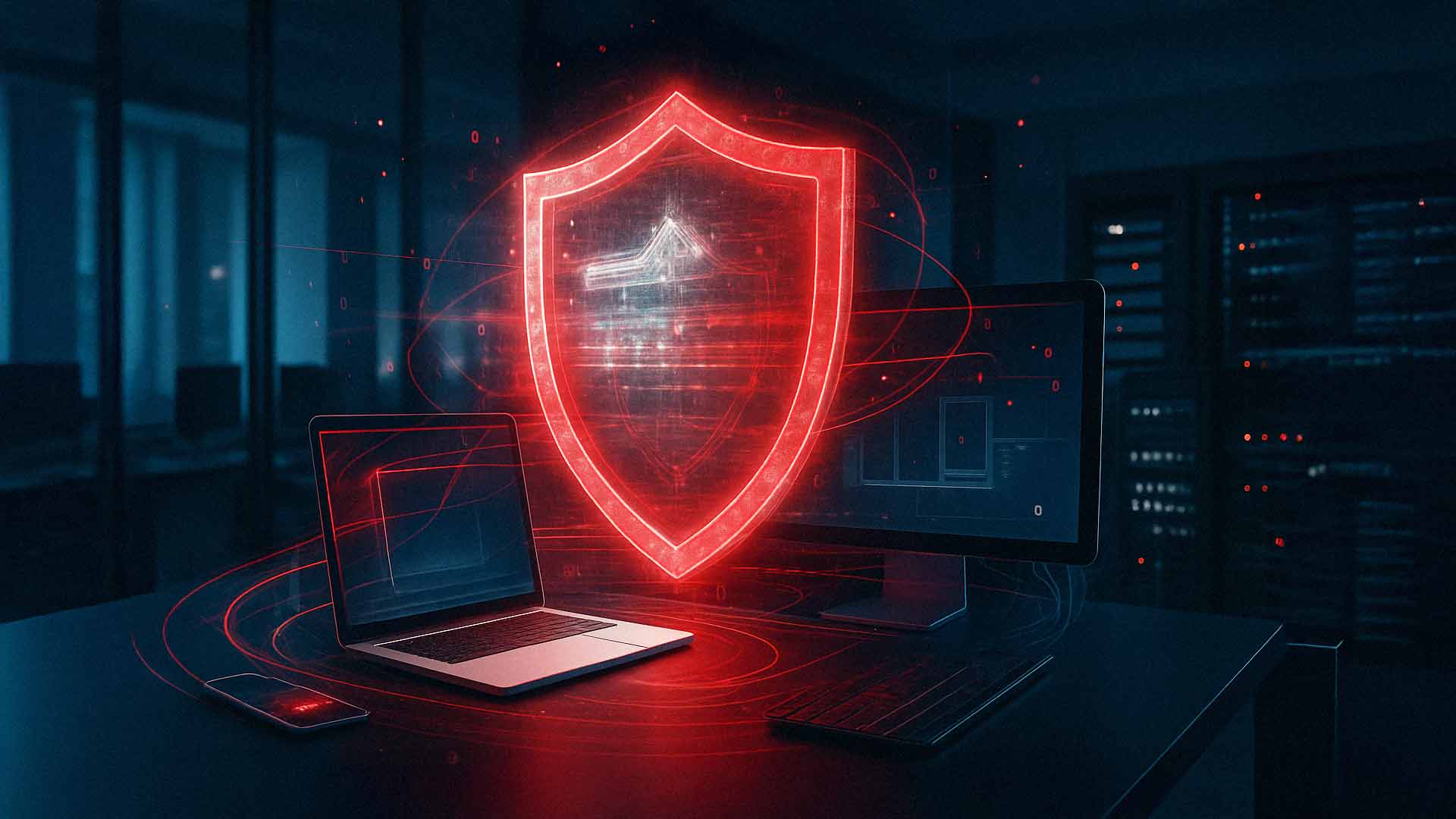What Are Endpoint Detection & Response (EDR) Tools and Do You Need Them?
August 14th, 2025 | 4 min. read

Cybersecurity threats are evolving faster than ever, and your business endpoints, like laptops, desktops, servers, and mobile devices, are often the first target.
While traditional antivirus software still plays a role in defense, it is no longer enough to protect against today’s sophisticated attacks.
This is where Endpoint Detection & Response (EDR) tools come in. They offer a more advanced way to detect, investigate, and respond to threats before they cause severe damage.
But what exactly is EDR, and do you need it for your business? Let’s break it down.
Why Endpoint Security Matters
The Role of Endpoints in Cybersecurity
An endpoint is any device that connects to your network. Every endpoint is a potential entry point for hackers. Whether it is a company laptop, an employee’s smartphone, or a point-of-sale system, these devices can be exploited to gain access to sensitive data.
How Modern Threats Target Laptops, Desktops, and Mobile Devices
Attackers often use phishing emails, malicious downloads, or compromised websites to target endpoints. Once they gain a foothold, they can move laterally across your network, steal data, or deploy ransomware.
What Is Endpoint Detection & Response (EDR)?
Definition in Simple Terms
EDR is a cybersecurity technology that continuously monitors endpoint devices to detect suspicious activity, investigate potential threats, and respond quickly to contain or remove them. Think of it as a combination of security cameras, alarms, and a rapid-response team, but for your computers and mobile devices.
How EDR Differs from Traditional Antivirus Software
Traditional antivirus tools rely on known malware signatures to block threats. EDR goes further by looking for unusual behaviors and patterns, even if they have never been seen before.
This makes EDR better at detecting advanced threats such as zero-day attacks.
How EDR Tools Work
Continuous Monitoring and Data Collection
EDR tools run in the background, collecting data about processes, network connections, file changes, and user activity. This data is sent to a central platform for analysis.
Threat Detection and Behavioral Analysis
Instead of relying solely on known threat databases, EDR analyzes patterns of behavior to spot potential attacks. For example, if a program suddenly starts encrypting large numbers of files, EDR can flag it as ransomware.
Automated and Manual Response Options
When a threat is detected, EDR can take automated actions like isolating the device from the network or killing a malicious process.
Security teams can also manually investigate and respond using the collected data.
Key Features of EDR Solutions
Real-Time Threat Alerts
EDR tools provide instant alerts when suspicious activity is detected, allowing for a quick response.
Forensic Investigation Capabilities
They store historical data that security teams can use to investigate how an attack started and what it affected.
Integration with SIEM Systems
Many EDR solutions integrate with Security Information and Event Management (SIEM) systems to provide a broader view of your organization’s security posture.
Remote Remediation and Isolation
EDR tools can remotely disconnect an infected device from the network to stop an attack from spreading.
The Benefits of EDR for Businesses
Early Threat Detection
EDR identifies suspicious behavior before it becomes a full-blown breach, reducing damage and downtime.
Faster Incident Response
Automated responses mean threats can be contained in minutes instead of hours or days.
Improved Compliance with Security Regulations
Many compliance standards, such as HIPAA, PCI DSS, and GDPR, require businesses to have advanced monitoring and response capabilities. EDR can help meet these requirements.
Do You Need EDR?
When Basic Antivirus May Be Enough
If you are a small business with minimal sensitive data and a limited network, a well-managed antivirus solution paired with strong user training is sufficient in the short term.
Signs Your Business Should Upgrade to EDR
- You handle sensitive customer or financial data.
- You are subject to strict compliance regulations.
- You have a remote or hybrid workforce.
- You have experienced security incidents in the past.
Industry and Compliance Considerations
Healthcare, finance, and legal industries are prime candidates for EDR because of the high value of the data they handle and the regulations they must meet.
Choosing the Right EDR Solution
Matching Features to Your Risk Profile
Look for EDR features that match your environment, such as cloud-based management for remote teams or deep forensic tools for regulated industries.
Considering Managed EDR Services
If you lack the staff or expertise to manage EDR in-house, consider a managed EDR service. This option allows a provider to handle monitoring, investigation, and response on your behalf.
Questions to Ask Vendors
- How does your EDR detect zero-day threats?
- Can it integrate with our existing security tools?
- What is the average response time when a threat is detected?
Endpoint Detection and Response for your SMB: Final Recommendations
Endpoint Detection & Response tools are no longer just for large enterprises. With cyberattacks becoming more targeted and sophisticated, EDR provides visibility, speed, and control that traditional antivirus software cannot match.
Whether you manage EDR in-house or partner with a managed provider, it can play a key role in protecting your business from evolving threats.
At AIS, we help businesses in Las Vegas and Southern California deploy and manage managed IT security services, including advanced endpoint protection.
If you are wondering whether EDR is right for you, our team can assess your risk level and compliance needs.
A true southerner from Atlanta, Georgia, Marissa has always had a strong passion for writing and storytelling. She moved out west in 2018 where she became an expert on all things business technology-related as the Content Producer at AIS. Coupled with her knowledge of SEO best practices, she's been integral in catapulting AIS to the digital forefront of the industry. In her free time, she enjoys sipping wine and hanging out with her rescue-dog, WIllow. Basically, she loves wine and dogs, but not whiny dogs.
Topics:



